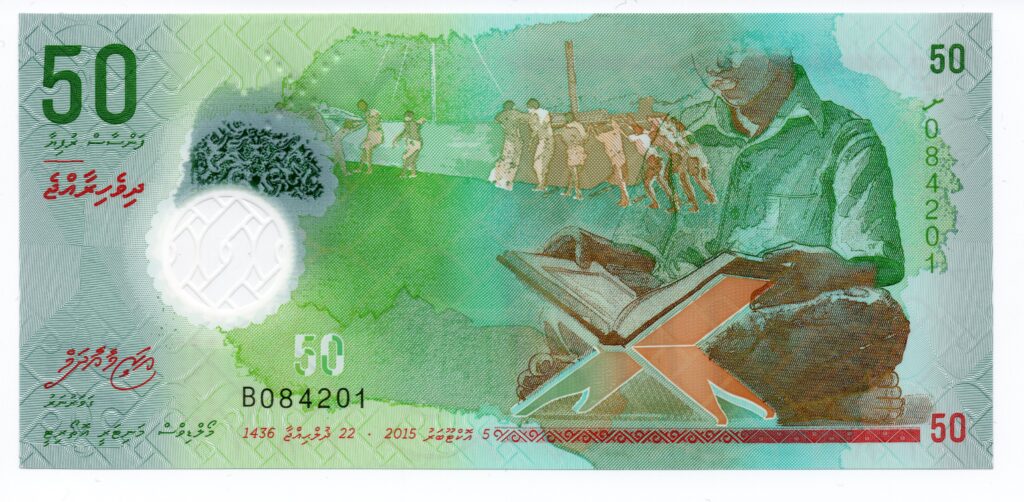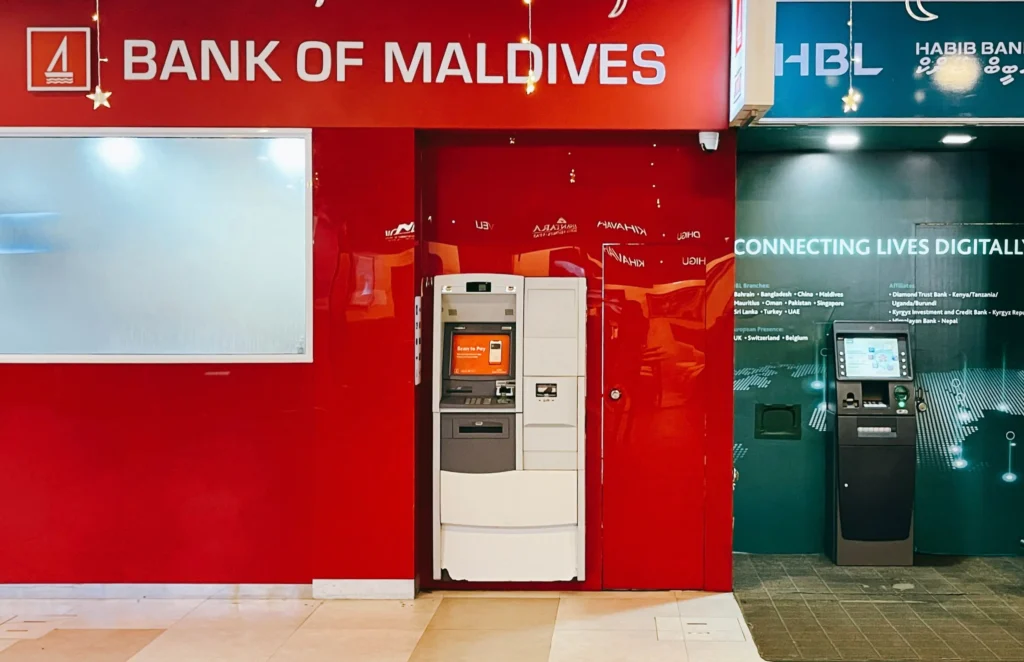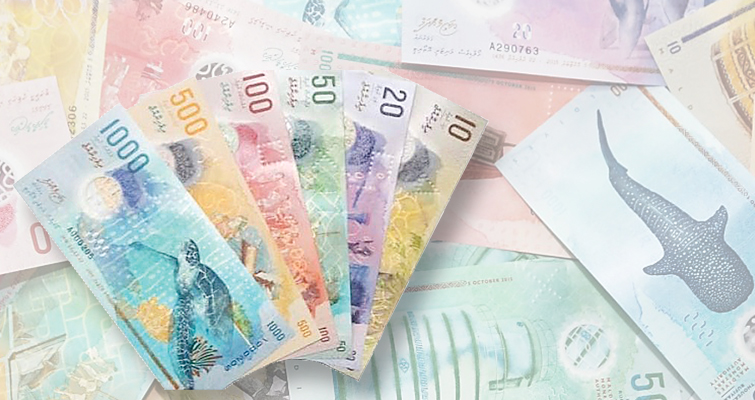
Currency in Maldives: A Simple Guide for Tourists
If you're heading to the Maldives, understanding the local currency is key to avoiding confusion and overspending. The official currency is the Maldivian Rufiyaa (MVR). Currency in Maldives is often written as Rf or MVR.
While some resorts and shops accept USD, most local islands, guesthouses, and eateries prefer payment in rufiyaa. Tourists are encouraged to carry local currency, especially when traveling outside resort islands. In this guide, we’ll explain how to exchange money, use digital payment apps, and understand tipping culture and card acceptance in the Maldives.
If you want to explore Maldives tour package, visit Gomayu. Otherwise, continue quenching your query.
- 1 Maldivian Rufiyaa = 100 Laari
- Common Notes: Rf5, Rf10, Rf20, Rf50, Rf100, Rf500, Rf1000
- Coins: Rf1, Rf2, 50 Laari, 25 Laari

Currency Exchange in Maldives
You can exchange foreign currency at the airport, banks, or licensed money changers in Malé. USD is widely accepted, but you’ll often get change in MVR. The best rates are usually offered by banks, but they operate only during business hours. Avoid exchanging currency on remote islands as the options are limited or nonexistent.
Where to exchange safely:
- Maldives Monetary Authority (MMA) in Malé
- Bank of Maldives, State Bank of India branches
- Airport exchange counters (slightly higher rates)
- Guesthouses or hotels on inhabited islands (convenience-based)
Highlights:
- Always carry your passport when exchanging money.
- Exchange before heading to outer islands.
- Bank hours: Sunday to Thursday, 8 AM to 2 PM.

Digital Payment Options in Maldives
Digital payments are growing but not as common on local islands. Large resorts and some cafés in Malé accept card or mobile payments. There are local payment apps like BML MobilePay, but they require a Maldivian bank account. Foreign tourists mostly rely on cards and cash.
For tourists:
- Use credit/debit cards at resorts and tourist restaurants.
- Mobile payment options are limited for foreigners.
Highlights:
- Pay via card or USD in most resorts.
- Local shops may only accept cash in MVR.
- Digital wallets are not widely accessible for foreigners.

Credit Card and Debit Card Payments
Cards are widely accepted at resorts, dive centers, and high-end restaurants. Visa and Mastercard are the most common, while Amex may work in some luxury resorts. However, most local shops or boats don't accept cards, especially on non-resort islands.
Accepted cards:
- Visa and Mastercard are commonly used.
- Some luxury spots may take Amex.
Highlights:
- Always carry some cash for local expenses.
- Expect an extra 3–5% fee at some places for card use.
- ATMs available only on main islands.

Tipping Culture in Maldives
Tipping is appreciated but not required in the Maldives. Many resorts include a 10% service charge in bills. Still, personal tips are welcome for excellent service. Tips are best given in local currency or USD.
When to tip:
- Resort staff (porters, waiters, guides)
- Boat crew and dive instructors
Highlights:
- Tipping is not mandatory but considered polite.
- Leave tips in envelopes at the front desk or directly to staff.
- Local eateries don’t expect tips.
Useful Tips for Tourists
- Bring enough USD or exchange to MVR at the start.
- Keep small MVR notes for ferries and shops.
- Use Google Maps to locate ATMs on inhabited islands.
- Exchange leftover rufiyaa before leaving limited global value.
- Carry cash for tips, small eateries, and island ferries.
FAQs About Currency in Maldives
How do you pay for things in Maldives?
You can pay using Maldivian Rufiyaa (MVR), USD, or international credit/debit cards. Local islands prefer cash, while resorts accept cards.
2. What is the payment currency in Maldives?
The official currency is the Maldivian Rufiyaa (MVR). USD is also widely accepted in tourist areas.
3. Which cards are accepted in Maldives?
Visa and Mastercard are accepted at most resorts and hotels. Some luxury spots may also accept Amex.
4. Can you pay in USD in Maldives?
Yes, USD is accepted in resorts, dive centers, and some shops. You may receive change in MVR.
5. Does Maldives use cash or card?
Both are used. Cards in resorts and cash on local islands. Cash is essential in rural or non-touristy areas.
6. Should I carry cash in Maldives?
Yes, carry some cash for local purchases, tips, and ferry tickets. Resorts may allow full card payments.
7. Is Maldives cheap or expensive?
Maldives is generally expensive, especially at resorts. Local islands offer more budget-friendly travel experiences.
8. Is rupee accepted in Maldives?
No, Indian Rupees are not accepted. You must use MVR or USD.
9. Is Maldives expensive for food?
Yes, food at resorts can be pricey. Local island eateries are much more affordable.
10. How much is USD dollar in Maldives?
1 USD is approximately 15.4 MVR. Rates may vary slightly depending on the exchanger.
11. Do I need to buy SIM card in Maldives?
Yes, you can buy tourist SIMs at the airport or local shops. Dhiraagu and Ooredoo are the main providers.
12. Which card is best for international use?
Visa and Mastercard work best in the Maldives. Choose a card with no foreign transaction fees.
13. Is visa free in Maldives?
Yes, Maldives offers a free 30-day visa on arrival to all nationalities. You just need a valid passport and booking.
14. What language is spoken in Maldives?
Dhivehi is the national language. English is widely spoken in resorts and tourist areas.
15. How much USD can I carry to Maldives?
There is no declared limit under USD 30,000. Anything above that must be declared at immigration.
16. Do I need to tip in Maldives?
Tipping is not mandatory but is appreciated. Resorts often add a 10% service charge to bills.
17. Is Maldives cashless?
Not entirely. Resorts accept cards, but local islands often require cash payments.
18. How much cash can you bring into Maldives?
You can bring in any amount below USD 30,000 without declaration. Declare if carrying more.
19. Do I need a visa for Maldives?
No pre-arranged visa is needed. You get a free visa on arrival for up to 30 days.
20. Do and don’ts in Maldives?
Respect local dress codes on inhabited islands. Don’t bring alcohol or pork—both are banned outside resorts.
21. Is it smart to carry cash?
Yes, it’s useful for small purchases, tips, and ferry rides. Use cards for large transactions.
22. Can you drink tap water in Maldives?
No, tap water is not safe to drink. Always use bottled or filtered water.
23. What month is Maldives cheapest?
May to October is the low season and offers cheaper rates. Expect occasional rain during this time.
24. Is Maldives a luxury?
Yes, it’s known as a luxury destination. But budget options are available on local islands.
25. Do you pay tips in Maldives?
Tipping is appreciated, especially in resorts and tours. Cash tips are usually given in USD or MVR.
26. Do you pay tourist tax in Maldives?
Yes, tourists pay Green Tax (USD 3–6 per night). It’s usually included in your accommodation bill.
27. How to get Maldives currency?
You can exchange currency at the airport, banks, or hotels. Banks offer better rates than resorts.
28. How much money should I take to Maldives?
Bring enough for tips, transport, and local expenses—USD 50–100 per day is a good estimate outside resorts.
29. What is the average salary in Maldives?
The average salary is around MVR 10,000–15,000 per month. Resort workers may earn more with tips.
30. How much is the exit fee in the Maldives?
There is no separate exit fee. All taxes are included in your flight ticket.
31. What is ++ in Maldives?
"++" means a 10% service charge and 12% GST will be added. Check if prices are "net" or "++" before booking.
32. Do foreigners pay tax in Maldives?
Yes, foreigners pay GST (Goods and Services Tax) and Green Tax during their stay.
33. How much is 1 RS in 1 Maldives currency?
1 Indian Rupee is approximately 0.19 MVR. Exchange rates change frequently.
34. How much is 500 Maldives dollars in Indian rupees?
500 MVR ≈ ₹2,500–2,700 depending on current rates. Check live conversion rates before exchanging.
35. Is food cheap in Maldives?
Food is expensive in resorts. Local cafés and guesthouses offer cheaper meals.








